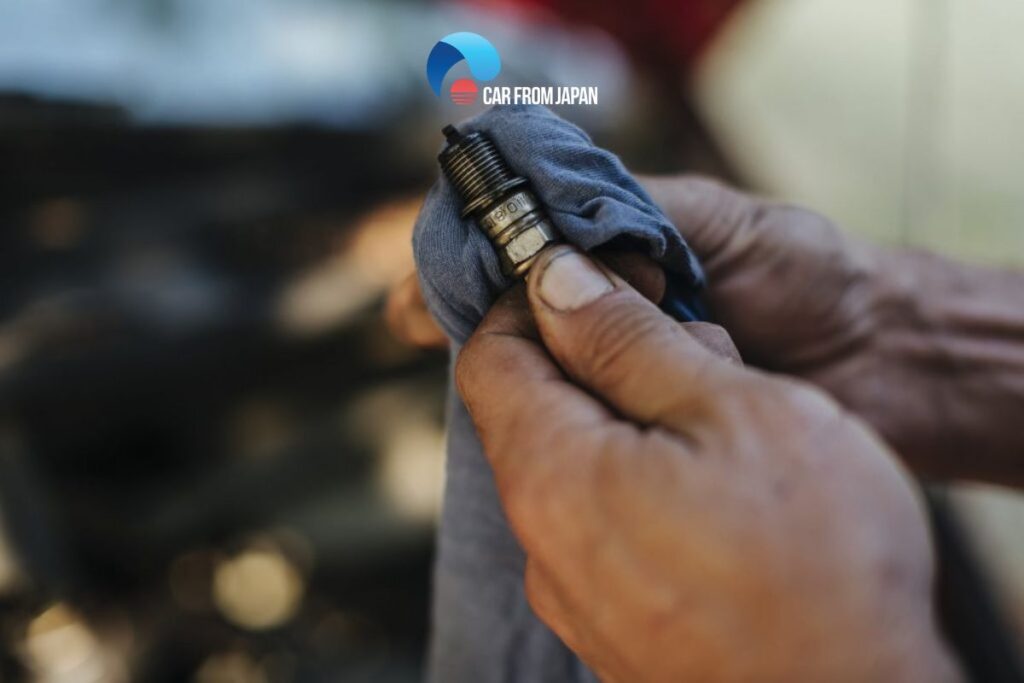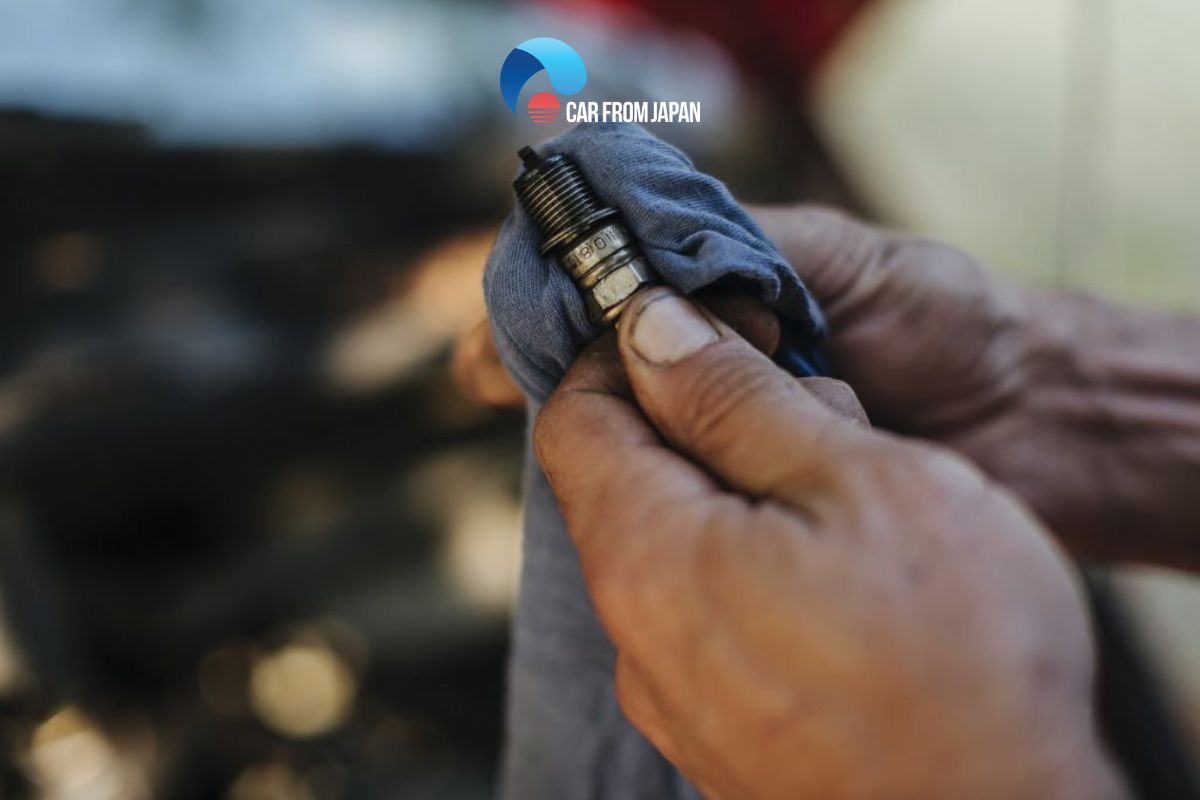
How to Fix Spark Plug Threads: A Comprehensive Guide
Stripped spark plug threads are a common headache for car owners and mechanics alike. A seemingly minor issue can quickly escalate into a major repair, costing time and money. Understanding how to fix spark plug threads is crucial for anyone who works on engines, whether you’re a seasoned professional or a DIY enthusiast. This comprehensive guide will walk you through the steps, tools, and techniques needed to repair damaged spark plug threads effectively and safely.
Understanding the Problem: Stripped Spark Plug Threads
Before diving into the repair process, it’s important to understand what causes stripped spark plug threads. The most common culprit is overtightening the spark plug. Spark plugs need to be tightened to a specific torque specification. Exceeding this torque can damage the soft aluminum threads in the cylinder head. Cross-threading, where the spark plug is not aligned correctly when being installed, is another frequent cause. Corrosion and general wear and tear can also weaken the threads over time.
Ignoring stripped spark plug threads can lead to several problems. A loose spark plug can cause misfires, reduced engine performance, and even damage to the catalytic converter. In severe cases, the spark plug can be ejected from the cylinder head, potentially causing significant damage to the engine bay. Therefore, addressing this issue promptly is essential.
Tools and Materials Needed
To effectively fix spark plug threads, you’ll need the right tools and materials. Here’s a list of essentials:
- Spark Plug Thread Repair Kit: This kit typically includes a tap, insertion tool, and thread inserts (often called Heli-Coils or Time-Serts). Choose a kit that matches the spark plug thread size for your engine.
- Tap Handle: Used to turn the tap and cut new threads.
- Drill (Optional): May be needed if the existing threads are severely damaged. Consult the repair kit instructions.
- Drill Bits (Optional): If drilling is required, select the correct size as specified in the repair kit.
- Penetrating Oil: Helps to loosen any debris or corrosion in the threads.
- Grease: To catch metal shavings during the tapping process.
- Vacuum or Compressed Air: To remove any remaining debris from the cylinder.
- Spark Plug Socket: To install the new spark plug.
- Torque Wrench: To tighten the spark plug to the correct torque specification.
- Safety Glasses: To protect your eyes from debris.
- Gloves: To protect your hands.
Step-by-Step Guide to Fixing Spark Plug Threads
Here’s a detailed, step-by-step guide on how to fix spark plug threads:
Preparation
- Safety First: Disconnect the negative battery cable to prevent any electrical accidents. Ensure the engine is cool before starting the repair.
- Access the Spark Plug: Remove any components that are obstructing access to the spark plug, such as the air intake or wiring harnesses.
- Remove the Spark Plug: Carefully remove the damaged spark plug. Inspect the threads on the spark plug to assess the extent of the damage.
- Clean the Area: Use compressed air or a vacuum to remove any loose debris from around the spark plug hole.
Thread Repair Process
- Apply Penetrating Oil: Spray penetrating oil into the spark plug hole to help loosen any corrosion or debris. Let it soak for a few minutes.
- Insert the Tap: Apply a generous amount of grease to the tap. This will help to catch the metal shavings as you cut new threads.
- Cut New Threads: Carefully insert the tap into the spark plug hole. Ensure it is aligned straight. Use the tap handle to slowly turn the tap, cutting new threads. Apply steady pressure and avoid forcing the tap. Turn the tap a few turns, then back it out slightly to break the shavings. Continue this process until the tap is fully inserted.
- Remove the Tap: Once the tap is fully inserted, carefully remove it from the spark plug hole. Clean the tap and the spark plug hole thoroughly to remove any remaining metal shavings.
- Install the Thread Insert: Follow the instructions provided with your spark plug thread repair kit to install the thread insert. Typically, this involves using an insertion tool to screw the insert into the newly tapped threads.
- Break Off the Tang (If Applicable): Some thread inserts have a tang that needs to be broken off after installation. Use the appropriate tool (usually part of the repair kit) to break off the tang.
- Clean the Cylinder: Use a vacuum or compressed air to remove any remaining debris from the cylinder. It is crucial to ensure that no metal shavings are left inside the cylinder, as they can cause significant engine damage. A borescope can be helpful to inspect the cylinder.
Final Steps
- Install the Spark Plug: Apply a small amount of anti-seize compound to the threads of the new spark plug. Carefully thread the spark plug into the repaired hole by hand to avoid cross-threading.
- Tighten the Spark Plug: Use a torque wrench to tighten the spark plug to the manufacturer’s specified torque. Overtightening can damage the new threads, while undertightening can cause the spark plug to loosen.
- Reconnect Components: Reconnect any components that were removed to access the spark plug, such as the air intake or wiring harnesses.
- Reconnect the Battery: Reconnect the negative battery cable.
- Start the Engine: Start the engine and listen for any unusual noises or misfires. If the engine runs smoothly, the repair was successful.
Choosing the Right Thread Repair Kit
Selecting the right spark plug thread repair kit is crucial for a successful repair. There are several types of kits available, each with its own advantages and disadvantages. The two most common types are Heli-Coil kits and Time-Sert kits.
Heli-Coil Kits
Heli-Coil kits use a wire thread insert that is coiled into the tapped threads. These kits are generally more affordable and easier to use than Time-Sert kits. However, Heli-Coil inserts are not as strong as Time-Sert inserts and may not be suitable for high-performance engines.
Time-Sert Kits
Time-Sert kits use a solid bushing insert that is threaded into the tapped threads. These kits are more expensive than Heli-Coil kits but provide a stronger and more durable repair. Time-Sert inserts are ideal for high-performance engines and applications where strength and reliability are critical.
When choosing a kit, consider the following factors:
- Spark Plug Thread Size: Ensure the kit matches the spark plug thread size for your engine.
- Engine Type: Choose a kit that is suitable for your engine type (e.g., standard, high-performance).
- Material: Look for kits that use high-quality materials for the tap and inserts.
- Ease of Use: Consider your skill level and choose a kit that is easy to use.
- Cost: Compare the cost of different kits and choose one that fits your budget.
Alternative Solutions
While repairing the threads is often the best solution, there are alternative options to consider, especially if the damage is extensive or you lack the necessary tools and skills.
Oversized Spark Plugs
Oversized spark plugs have a slightly larger thread diameter and can be used to bypass the damaged threads. However, this is only a temporary solution and may not be suitable for all engines. It’s also becoming harder to find oversized spark plugs.
Cylinder Head Replacement
In severe cases, the cylinder head may need to be replaced. This is the most expensive option but ensures a permanent and reliable repair. If the damage is extensive or multiple spark plug threads are stripped, replacing the cylinder head may be the best course of action. This is especially true for aluminum heads, which are more prone to thread damage.
Preventing Stripped Spark Plug Threads
Prevention is always better than cure. Here are some tips to prevent stripped spark plug threads:
- Use a Torque Wrench: Always use a torque wrench to tighten spark plugs to the manufacturer’s specified torque.
- Avoid Overtightening: Overtightening is the most common cause of stripped spark plug threads.
- Apply Anti-Seize Compound: Apply a small amount of anti-seize compound to the threads of the spark plug to prevent corrosion and make it easier to remove.
- Start by Hand: Always start threading the spark plug by hand to avoid cross-threading.
- Regular Inspection: Inspect the spark plug threads regularly for any signs of damage or corrosion.
Troubleshooting Common Issues
Even with careful preparation and execution, issues can arise when trying to fix spark plug threads. Here are some common problems and how to address them:
- Tap is Difficult to Turn: If the tap is difficult to turn, stop and check for obstructions or debris. Apply more penetrating oil and ensure the tap is aligned straight.
- Thread Insert Won’t Install: If the thread insert won’t install, ensure the threads are clean and free of debris. Check the thread size and make sure you are using the correct insertion tool.
- Spark Plug Still Loose: If the spark plug is still loose after the repair, the thread insert may not be fully seated. Remove the spark plug and inspect the insert. Reinstall the insert if necessary. If using a Heli-Coil, ensure that the tang has been broken off.
- Metal Shavings in Cylinder: Despite your best efforts, some metal shavings might still end up in the cylinder. Use a vacuum with a small hose attachment to carefully extract any visible shavings. Consider using a borescope to inspect the cylinder walls for any remaining debris.
The Bottom Line
Knowing how to fix spark plug threads can save you time and money. By following the steps outlined in this guide, you can effectively repair damaged threads and restore your engine’s performance. Remember to use the right tools, take your time, and prioritize safety. If you’re not comfortable performing the repair yourself, consult a qualified mechanic. A properly repaired spark plug thread will ensure optimal engine performance and prevent further damage. Addressing stripped threads promptly is key to maintaining the health and longevity of your engine. Therefore, understanding how to fix spark plug threads is a valuable skill for any car owner or mechanic.
[See also: How to Change Spark Plugs]
[See also: Understanding Engine Misfires]
[See also: Choosing the Right Spark Plugs]

